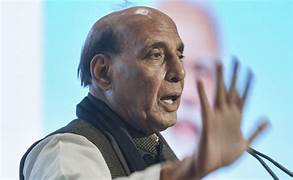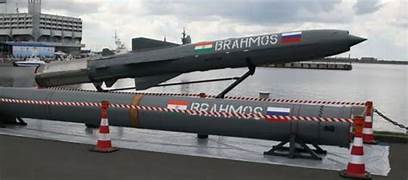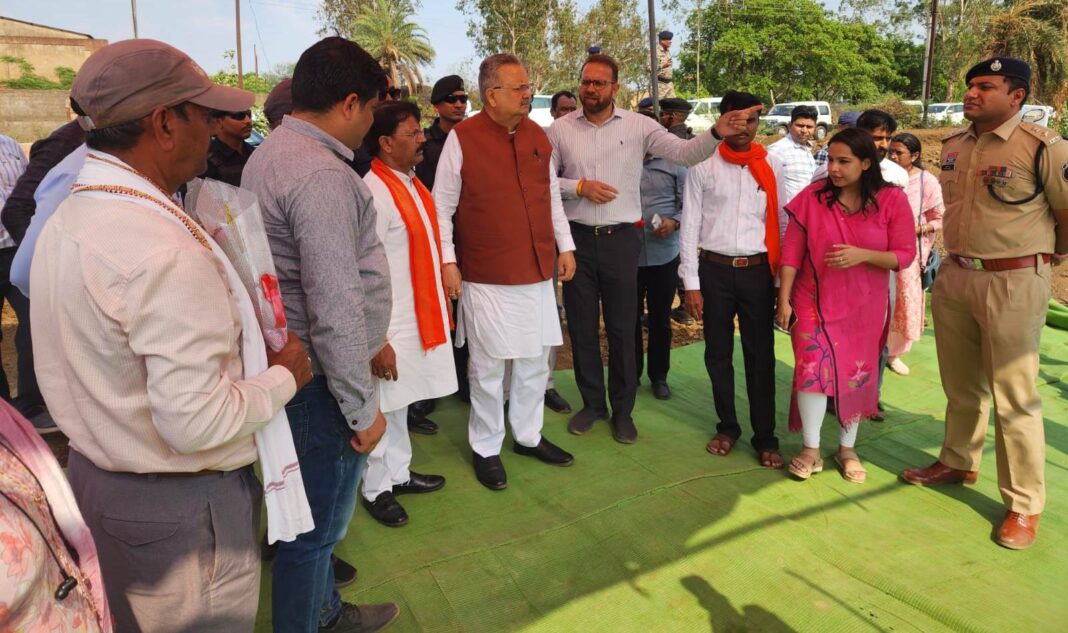On National Technology Day, Defence Minister Rajnath Singh inaugurates the BrahMos Aerospace facility in Lucknow, calling it a message of India’s strength and a major leap in indigenous defence production.
Published on: May 12, 2025
By: BTI
Location: Lucknow, India

Defence Minister Rajnath Singh declared the BrahMos supersonic cruise missile as not just a weapon but a powerful message of India’s military might and resolve during the virtual inauguration of the BrahMos Aerospace Integration and Testing Facility in Lucknow on Sunday. The state-of-the-art facility, part of the Uttar Pradesh Defence Industrial Corridor (UP DIC), marks a significant step toward India’s goal of self-reliance in defence manufacturing.
Speaking on National Technology Day, Singh emphasized the symbolic timing of the event, recalling India’s historic nuclear tests in Pokhran on May 11, 1998, under former Prime Minister Atal Bihari Vajpayee. “BrahMos is one of the world’s fastest supersonic cruise missiles. It is not merely a weapon—it is a message of India’s strength, deterrence, and unwavering commitment to protecting its borders,” Singh said, quoting former President A.P.J. Abdul Kalam: “Strength respects strength. The world respects the powerful, not the weak.”
Also read this-https://www.btnewsindia.com/india-pakistan-conflict-ends-with-ceasefire-declaration/ https://www.btnewsindia.com/supreme-court-drops-bombshell/
The Rs 300-crore facility, spread over 80 hectares of land provided free by the Uttar Pradesh government, was completed in just 40 months. It is designed to produce 80–100 BrahMos missiles annually, with plans to scale up to 100–150 next-generation BrahMos-NG variants each year. The BrahMos-NG, a lighter and more versatile missile weighing 1,290 kilograms with an extended range of over 300 kilometers, will enhance the Indian military’s combat capabilities, allowing fighter jets like the Sukhoi to carry up to three missiles instead of one.
Singh hailed the facility as a milestone in India’s “Make in India, Make for the World” vision, noting its potential to position India as a global hub for defence manufacturing. “A huge market for arms and equipment awaits us,” he said, citing a 2024 Stockholm International Peace Research Institute report that global military expenditure reached USD 2,718 billion. The facility is expected to generate 500 direct and 1,000 indirect jobs, boosting the local economy and reinforcing Uttar Pradesh’s role as a defence manufacturing hub.

Uttar Pradesh Chief Minister Yogi Adityanath, present at the event, underscored the strategic significance of the BrahMos missile, particularly in light of recent tensions with Pakistan. “If anyone has not seen the power of BrahMos, they must ask Pakistan,” Adityanath remarked, hinting at the missile’s use in Operation Sindoor, a retaliatory strike targeting terrorist infrastructure following the Pahalgam terror attack that claimed 26 civilian lives.
The inauguration also saw the launch of the Titanium and Super Alloys Materials Plant and the foundation stone for the Defence Testing Infrastructure System (DTIS), further strengthening the UP DIC’s ecosystem. Singh likened the Indo-Russian BrahMos collaboration to the spiritual confluence of Prayagraj, stating, “Lucknow will now be known for this technological confluence that combines the best of Indian and Russian defence capabilities.”
As India strengthens its defence capabilities amid regional tensions, the BrahMos facility stands as a testament to the nation’s commitment to self-reliance and deterrence. “Our fury reached Rawalpindi,” Singh said, referring to the Pakistani military headquarters, signaling that India’s resolve against terrorism remains unyielding.
The event, attended by UP Deputy CM Keshav Prasad Maurya and other dignitaries, was celebrated as a historic day for Lucknow, Uttar Pradesh, and India’s defence sector. With the BrahMos facility, India is poised to not only bolster its military prowess but also inspire confidence in its citizens and send a clear message to the world: India stands strong, ready to defend its sovereignty.




